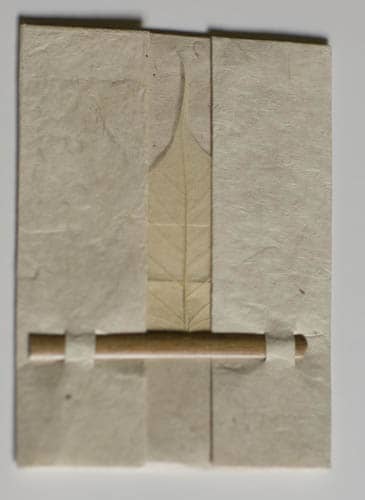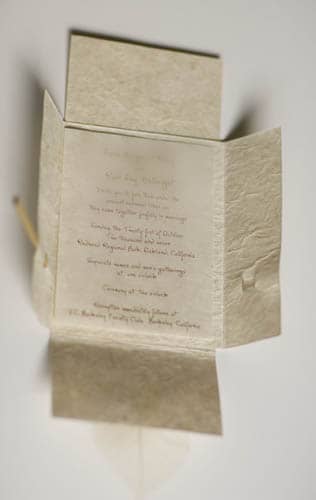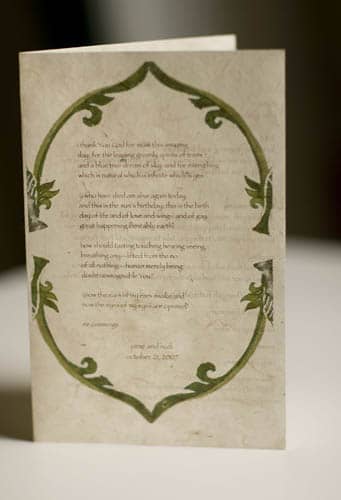This article first appeared on our wedding website back in October and I thought some of you might be interested in what we learned. As an aside, Halbright Photography is currently in the process of getting green certified.
An eco-wedding in the making
It’s not easy being green
We are both concerned about the condition of our planet Earth. We have fretted about the environmental impact of our wedding. Yet we feel it is important to bring our community together to celebrate important occasions like our wedding. We have decided to take our environmental impact into consideration as we make decisions. It hasn’t always been easy; and yet, it has helped us determine our priorities.
We had some ideas that sounded great but didn’t end up being as green as we hoped. Rudi found a mail-order store in Israel that provides eco-suede kippot* made of recycled cardboard. Sounds green? We soon found that these kippot are made in China, shipped to Israel and then shipped direct to us in the United States. Not very green. Our questions to the store (via email) about where they are made and how they are dyed remain unanswered weeks after asking them. The solution? We are skipping the kippot. Anyone who wants to wear one is welcome to bring theirs. Many of us already have a drawer full of kippot from weddings and mitzvot so we can choose among them. If you have them, we would prefer that you wear a brown or green kippah to blend with our natural setting in the redwoods, but wear what you like or none at all.
*Kippot are small round caps worn by Jewish men and women. Traditionally, Kippot has been worn only by men, but in modern times the push for equality between the sexes in the practice of Judaism has led some women to wear Kippot. Some Jews only wear Kippot while praying, making blessings, or studying Jewish religious texts; more traditional Jews wear Kippot the entire day.
Our Invitations
Thanks to Nepalese Paper company for our beautiful invitations! Rudi took a flyer from them last November at the Green Festival in SF (over one month before he proposed). We love their invitations, the fact that they are tree-free is great, and we laser printed them which is better for the environment than ink jet printing. They are shipping in bulk from Nepal which isn’t very green, but we like supporting the Nepalese workers and the connection to Janie’s Tibetan Buddhist practice is a nice one.


Our invitations are printed on single sheets of 8.5 x 11 paper and cut to size. No staples or saddle stitching is used which makes them easier to recycle.
Catering
We were excited by a number of eco-friendly caterers including Back to Earth, located nearby in Emeryville. We ended up selecting a venue which provides its own catering and doens’t allow outside caterers. We are working with the Berkeley Faculty club to provide as many organic and local ingredients as possible. We will report on our results once we finalize everything.
Candles/Centerpieces
We have decided against petroleum based candles. We have decided to use LED based candles that use rechargeable batteries. One of the manufactures has stopped making these so we obtained as many as we could in time and found another company to provide the rest. Some of them have built in batteries with a dedicated charger and the others use AA batteries. We have used nimh rechargeable AA in those ones as we don’t like to through away batteries. These candles will serve dual purpose — as part of our centerpieces and as gifts to those who have helped much at our wedding!
Flowers and Plants
We are using local flowers and potted plants that are grown naturally. Many popular flowers used for weddings don’t last long enough so they are treated with chemical preservatives. We are selecting flowers that don’t require these and using potted plants as part of the decor.
Powering the event A PA System without power? After working a number of weddings which didn’t have PA (public address) systems and where everyone struggled to hear the ceremony, I knew having good audio was important. We are expected at least 130 people and have at least one person who is hard of hearing in the mix. Meanwhle we are in a park outdoors without any electricity. My hope was to use the same deep cycle battery that I’ve used along with my flexible solar panels to power our solar Sukkah last year and a low power lighting system for our camp at Burning man this year. The trees are too dense to allow enough light in for solar and based on my calculations my battery isn’t quite powerful enough to power an audio system for the entire time — so I’ve purchased a second battery (used) just like it the first one, and that battery will be resold thanks to Craigslist after the event. I will have two 55ah batteries hooked up in parallel to a 1000 watt pure sine wave inverter powering two powered PA speakers and a mixing console. These batteries weigh almost 50 lbs each so getting one larger one wasn’t going to work as well. This isn’t the ultimate green audio setup but much better than a generator as it’s charged from a more efficient source with more pollution controls (our local power station) and less noisy too! The original battery and inverter were purchased used via eBay and the only brand new part is the cables that connect the batteries to the inverter. |
Flatware for the wedding events, How green is it?
How green can paper plates be?
It would have been great to have limited ourselves to reusable plates and other items but with events at 4 different locations, no sink available at 2 of them and limited time, it just wasn’t practical. The plates we used aren’t made of paper at all but rather are made of pulp that is left over in sugar cane production. These are fully biodegradable so please do not through them in the garbage! We will provide a special receptacle for compostable trash!
Also, we opted for 3 section plates to avoid having separate salad bowls. These may not hold as much salad but there will be plenty for seconds!
Plastic cups? Now these can’t be green???
Our “plastic” cups are vege-based and are also compostable and made from renewable resources. These are made from a combination of corn and other vegetable products and are similar to the forks, knives and spoons we used.
We were hoping to buy all of these from local company Green Home www.greenhome.com but there minimum quantities were very high, except for the individually wrapped fork/knife/spoon sets which had too much waste wrapping, and we won’t need as many knives as the rest so it would have produced excessive waste. Instead we purchased items from Boulder, CO based www.ecoproducts.com who shipped them promptly and used biodegradable peanuts that Rudi will reuse in my business. The entire order of supplies was ordered together from one supplier to minimize the energy used to ship them.
Bottled water?
We were tempted to buy bottled water but that’s so much wasted plastic and we already have cups. PLA (plant based) plastic is tempting but expensive. We have decided to reuse the 5 gallon water bottles we purchased for burning man along with a simple pump. You can see these in action at the picnic.
If someone volunteers to refill them and bring them to our ceremony site we can provide water there too. Let me know if you want to volunteer! [Note: We ended up having water left over and someone did bring them to the reception site!]
Our Programs were also printed on paper from Nepalese Paper Company as were our Seating tent cards
At Halbright Photography I strive to be as green as possible while producing beautiful products for my clients. I use recycled paper within the business, drive a hybrid vehicle, purchase non-critical equipment used, sell or give away what I don’t need, and print as much as possible using environmentally friendly printers.




